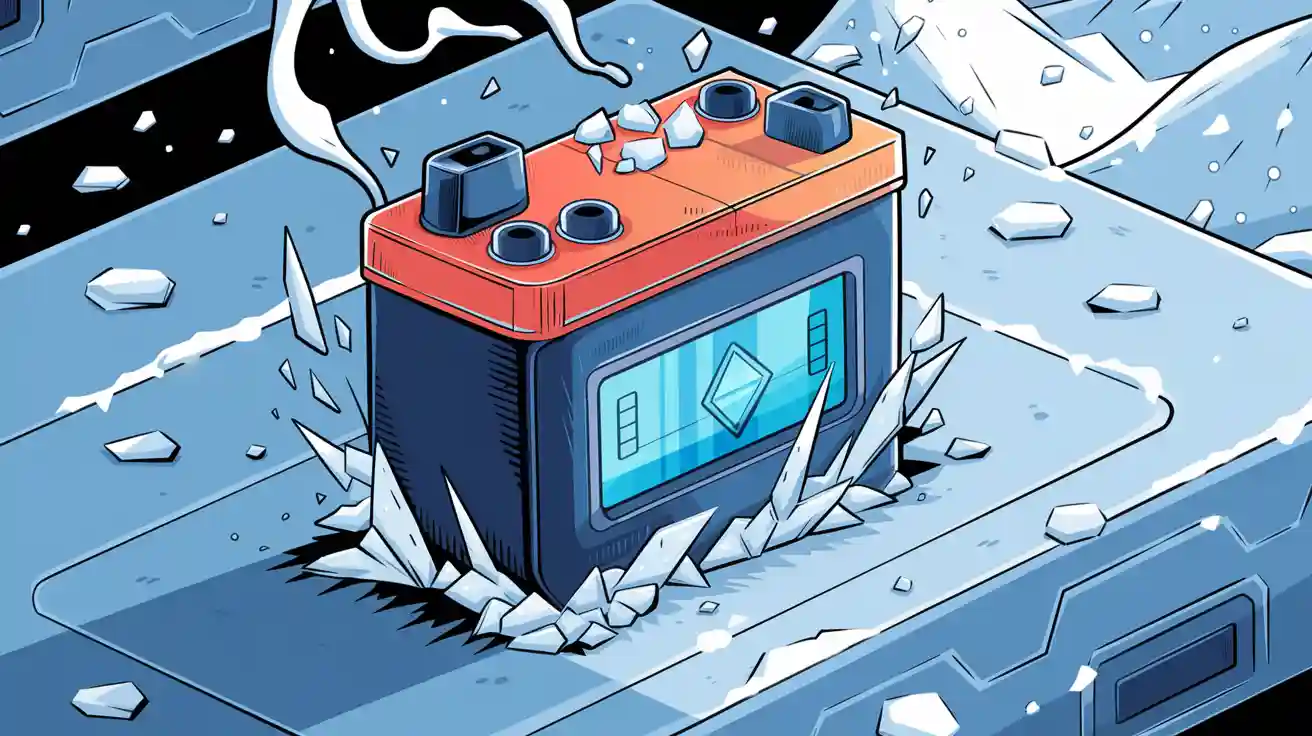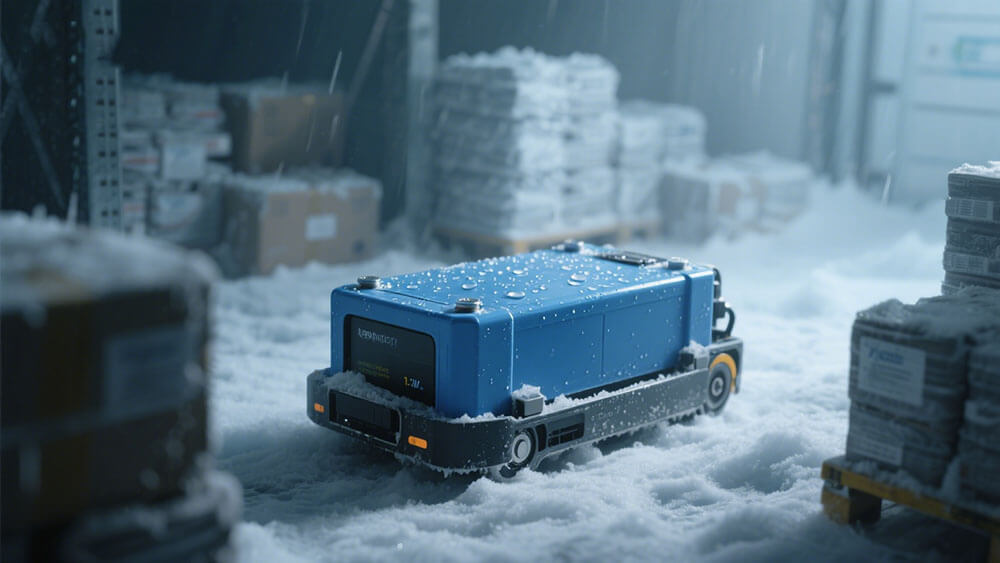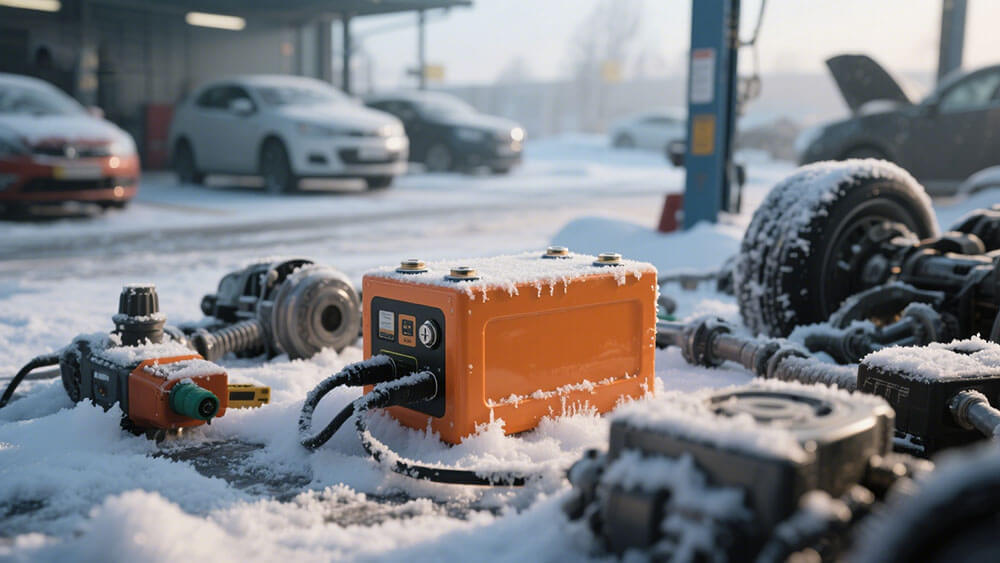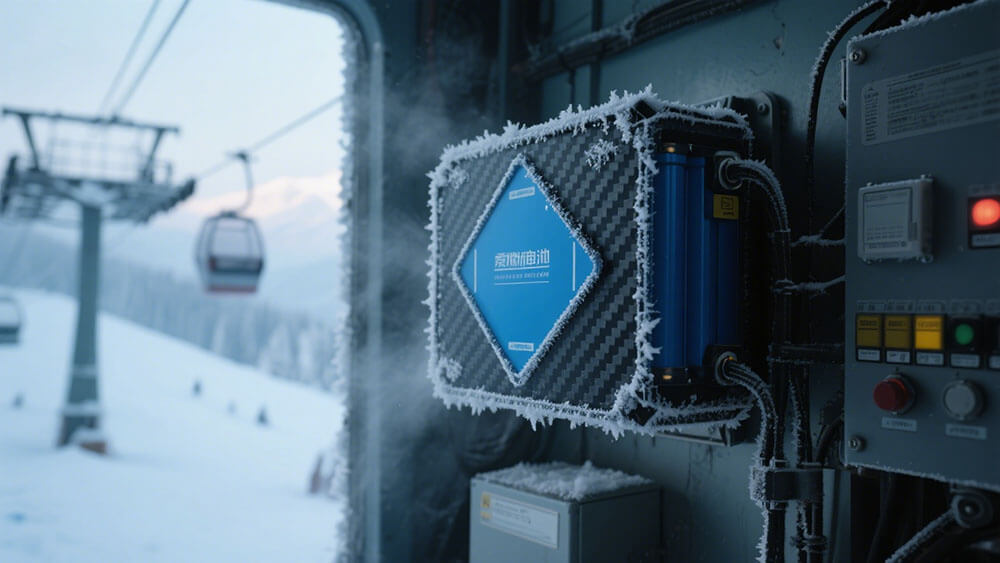
Cold weather can severely impact battery performance, reducing both efficiency and capacity. Lithium-ion batteries, however, stand out as the best solution for these challenges. Their stable electrochemical properties allow them to deliver reliable energy even in freezing conditions. If you’re wondering what is the good battery for cold weather, lithium-ion technology offers unmatched durability and performance for industrial and consumer applications. Explore how this innovation supports critical sectors like medical and infrastructure, ensuring uninterrupted operations in extreme climates.
Key Takeaways
Lithium-ion batteries work well in the cold because they are stable, making them great for important uses.
To stop batteries from failing in freezing weather, use covers like battery blankets and keep them in warm places.
Using smart battery systems can improve lithium battery performance by checking temperature and changing charging speeds.
Part 1: Challenges Batteries Face in Cold Weather

1.1 How Cold Weather Affects Lithium-Ion Batteries
Cold weather affects lithium-ion batteries in several ways, primarily by disrupting their chemical and physical properties. At low temperatures, the electrochemical reactions inside the battery slow down, reducing the efficiency of ion transport. This phenomenon impacts the battery’s ability to deliver consistent power. Research highlights that temperature-dependent interphase formation and Li+ transport are critical factors in understanding these challenges.
Evidence Description | Key Findings |
|---|---|
Temperature-dependent interphase formation and Li+ transport in lithium metal batteries | Understanding temperature’s influence on microstructure and performance is crucial for addressing kinetic challenges at low temperatures. |
Lowering temperature impacts ion transport and reaction kinetics | Results in smaller Li deposits, longer lengths towards the separator, and poorer electrochemical reversibility due to increased porosity. |
Migration velocity of solvated Li+ | Determines mass transfer and concentration gradient, influenced by solvation structure and ionic conductivity. |
Rate-determining step at low temperature | The relationship between temperature and electrochemical performance is critical for optimizing battery function. |
When lithium batteries freeze, the migration velocity of solvated Li+ ions slows significantly, leading to poor electrochemical reversibility. This can result in smaller lithium deposits and increased porosity, which further degrade battery performance. If you operate lithium-ion batteries in environments below freezing temperatures, these negative effects become more pronounced, making it essential to understand how temperature is bad for lithium batteries.
1.2 Reduced Efficiency and Capacity in Freezing Temperatures
Freezing temperatures reduce battery capacity and efficiency, making it difficult for batteries to hold a charge effectively. For lithium-ion batteries, the output voltage often drops below usable levels, rendering them unreliable in extreme conditions. Studies show that at approximately -22°F (-30°C), battery capacity can drop by 50%. Even at freezing temperatures, a reduction of about 20% is observed.
Key impacts of freezing temperatures on lithium-ion batteries:
Reduced capacity, limiting the battery’s ability to store energy.
Voltage drops, which can prevent the battery from powering devices.
Physical damage due to frozen electrolyte expansion, potentially rupturing the battery casing.
Shortened lifespan caused by repeated freezing and thawing cycles.
These negative effects of lithium batteries in cold weather highlight the importance of proper storage and usage practices. For industrial applications, where reliability is critical, understanding how cold weather affects lithium-ion batteries can help mitigate these risks.
1.3 Why Batteries Die in Cold Weather
Batteries die in cold weather due to the combined effects of reduced ion mobility, slower reaction kinetics, and physical stress on the battery components. When lithium batteries freeze, the electrolyte’s viscosity increases, hindering ion transport. This results in lower energy output and diminished capacity. Additionally, freezing temperatures can cause the electrolyte to expand, leading to structural damage.
Repeated exposure to below freezing temperatures accelerates wear and tear on the battery, shortening its lifespan. For example, consumer electronics and industrial equipment relying on lithium-ion batteries may experience frequent failures in cold climates. To prevent these issues, you must adopt strategies like insulation and advanced battery management systems.
Tip: Investing in lithium-ion batteries with optimized cold-weather performance can significantly reduce the risk of failure in freezing conditions. Explore custom solutions tailored to your needs: custom battery solutions.
Part 2: Why Lithium Batteries Excel in Cold Weather

2.1 Stable Electrochemical Properties in Low Temperatures
Lithium-ion batteries maintain stable electrochemical properties even in freezing conditions, making them the best choice for cold-weather applications. Their advanced electrolyte formulations allow for consistent ion transport, ensuring reliable energy output. Unlike traditional battery chemistries, lithium-ion technology minimizes performance degradation caused by low temperatures.
The conductivity of lithium-ion electrolytes highlights their superior stability. For instance:
Ternary electrolytes exhibit conductivity between 4–10 × 10⁻³ S cm⁻¹ at 20°C and ~2 × 10⁻³ S cm⁻¹ at −20°C.
Binary electrolytes, by comparison, drop from 8.8 × 10⁻³ S cm⁻¹ at 20°C to just 0.58 × 10⁻³ S cm⁻¹ at −20°C.
Ternary electrolytes also boast a lower freezing point (
−50°C) than binary electrolytes (−30°C).
This enhanced electrochemical stability ensures that lithium-ion batteries can operate effectively in extreme cold, making them indispensable for industries like robotics and infrastructure. If you’re wondering what is the good battery for cold weather, this stability is a key factor that sets lithium-ion batteries apart.
Tip: For applications requiring lithium-ion batteries that last longer in extreme cold, consider custom solutions tailored to your specific needs. Explore Custom Battery Solutions.
2.2 High Energy Density and Efficiency in Cold Environments
Lithium-ion batteries deliver high energy density and efficiency, even in freezing temperatures. This makes them ideal for powering devices and systems that demand consistent performance in harsh climates. Their energy density ranges from 160–270 Wh/kg for NMC lithium batteries and 100–180 Wh/kg for LiFePO4 lithium batteries, outperforming other chemistries like lead-acid or nickel-based batteries.
In cold environments, lithium-ion batteries retain their ability to store and discharge energy efficiently. This is crucial for applications such as medical devices, industrial equipment, and consumer electronics, where reliability is non-negotiable. For example, LiFePO4 lithium batteries offer a platform voltage of 3.2V and a cycle life of 2,000–5,000 cycles, ensuring long-term usability.
Battery Chemistry | Energy Density (Wh/kg) | Cycle Life (Cycles) |
|---|---|---|
NMC Lithium Battery | 160–270 | 1,000–2,000 |
LiFePO4 Lithium Battery | 100–180 | 2,000–5,000 |
Lead-Acid Battery | 30–50 | 300–500 |
This combination of high energy density and efficiency makes lithium-ion batteries the go-to solution for cold-weather applications. If you need high-quality lithium-ion batteries for extreme conditions, their unmatched performance ensures they meet your requirements.
2.3 Durability and Longevity Compared to Other Battery Types
Lithium-ion batteries excel in durability and longevity, outperforming alternative technologies like lead-acid, sodium, and potassium batteries. For instance, LiFePO4 lithium batteries last 15–20 years and can endure 6,000–10,000 cycles before their capacity drops to 70–80%. This longevity makes them a cost-effective choice despite their higher upfront cost.
Battery Type | Lifespan | Durability Insights |
|---|---|---|
LiFePO4 Lithium Battery | 15–20 years, 6,000–10,000 cycles | Longest cycle life among lithium chemistries |
Lead-Acid Battery | 3–5 years, 300–500 cycles | Prone to sulfation and reduced lifespan in cold |
Sodium/Potassium Battery | Emerging technology | Promising energy density but less proven |
Lithium-ion batteries also resist wear and tear caused by freezing and thawing cycles. Their robust design ensures minimal capacity loss over time, even in extreme cold. This durability is critical for applications in security systems, robotics, and infrastructure, where consistent power is essential.
Note: While lithium-ion batteries may cost more initially, their extended lifespan and superior performance make them a worthwhile investment. Learn more about sustainable battery solutions: sustainability at Large Power.
Part 3: How to Keep Lithium Batteries Warm in Cold Weather

3.1 Insulation Techniques for Lithium Battery Packs
To keep lithium batteries warm in cold weather, you can use several effective insulation techniques. These methods help maintain the optimal temperature range for lithium batteries, ensuring consistent performance and longevity.
Use a battery blanket: Insulated blankets trap heat around the battery pack, preventing rapid temperature drops.
Store batteries in insulated units: These units limit exposure to cold air and retain internal heat.
Pre-charge with solar panels: Charging batteries before exposing them to freezing conditions helps maintain their temperature.
Place batteries in heated areas: Keeping batteries in a controlled, warm environment reduces the risk of cold-related damage.
Install battery heaters: These devices provide adjustable heating to maintain the battery’s temperature within safe limits.
These techniques are particularly useful for industrial applications where batteries must operate in extreme climates. By insulating your lithium battery packs, you can reduce the risk of performance degradation and extend their lifespan.
3.2 Proper Storage and Charging Practices in Freezing Conditions
Properly storing lithium-ion batteries in cold weather is essential to prevent damage and maintain their efficiency. Follow these best practices:
Store batteries in a cool, dry place to avoid moisture damage.
Keep the charge level between 40% and 60% to reduce stress on the electrodes.
Avoid storing batteries in environments below 32°F (0°C) or above 77°F (25°C).
Periodically check the charge level and recharge if it falls below recommended levels.
Use low-humidity storage areas to prevent corrosion.
For charging, ensure the battery is at room temperature before connecting it to a charger. Charging a frozen battery can cause internal lithium plating, leading to permanent damage. These practices help you properly store lithium-ion batteries and ensure their reliability in freezing conditions.
3.3 Advanced Battery Management Systems for Cold Applications
Advanced battery management systems (BMS) play a critical role in maintaining lithium battery performance in cold weather. A BMS monitors the battery’s temperature, voltage, and charge levels, ensuring safe operation. Modern systems include features like thermal regulation, which prevents the battery from freezing or overheating.
For example, a BMS can activate internal heaters when the temperature drops below the optimal range. It can also adjust charging rates to prevent damage during cold conditions. These systems are particularly valuable for applications in robotics, infrastructure, and security systems, where uninterrupted power is crucial.
Investing in a high-quality BMS ensures your lithium batteries remain efficient and durable, even in extreme climates. For custom solutions tailored to your needs, consult experts like Large Power to optimize your battery systems.
Lithium batteries offer unmatched performance in cold weather due to their chemical stability and efficiency. You can optimize their reliability by addressing challenges like reduced capacity and increased resistance. Industries operating in freezing conditions, such as robotics and infrastructure, benefit significantly from this technology. For tailored solutions, consult experts at Large Power.
FAQ
1. How do lithium batteries perform in sub-zero temperatures?
Lithium batteries maintain stable performance in sub-zero temperatures due to their advanced electrolytes. They deliver reliable energy output even when temperatures drop below freezing.
2. Can you charge lithium batteries in freezing conditions?
Avoid charging lithium batteries in freezing conditions. Let them warm to room temperature first to prevent internal damage and ensure safe charging.
3. What is the lifespan of lithium batteries in cold climates?
Lithium batteries last 15–20 years in cold climates with proper care. Insulation, storage, and advanced battery management systems help extend their lifespan.
Tip: Always follow manufacturer guidelines to maximize battery performance in extreme weather.




